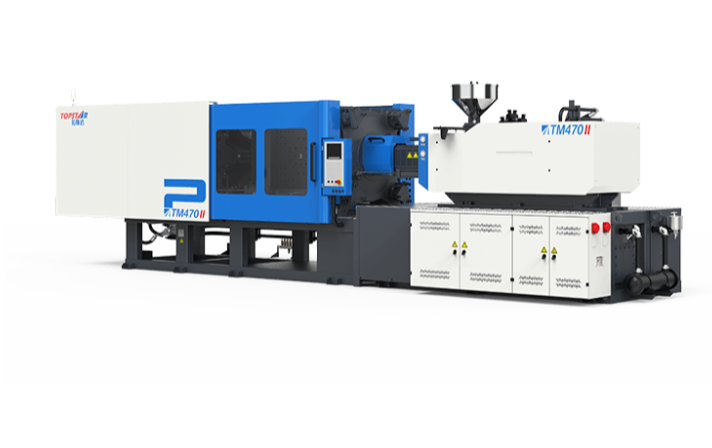Analysis of global demand for plastic injection molding machine production lines

The plastic injection molding machine industry supports countless industries, from automotive and consumer goods to medical devices and packaging. As the global manufacturing industry recovers and shifts to automation and sustainability, analyzing the demand for injection molding machine production lines can provide valuable insights into the health of the global economy and technology focus. The basics of global plastic injection molding machine production line demand include several key aspects, regional drivers, end-market growth, technology trends, automation impact, supply chain factors, competitive landscape, and future forecasts.
Drivers of demand for plastic injection molding machine in key regions
Regional economic conditions, labor costs, and government policies have a significant impact on the purchase of plastic injection molding machine production lines. In the Asia-Pacific region (especially China, India, and Southeast Asia), rapid industrialization and a growing middle class have stimulated demand for consumer goods and automotive parts, driving substantial investment in new injection molding machine production lines. Local incentives for advanced manufacturing have further promoted the popularity of high-speed motors.
Meanwhile, in North America and Europe, the reshoring trend and the emphasis on quality control have prompted manufacturers to upgrade existing production lines with plastic injection molding machine with tighter tolerances and more energy-efficient drives. In addition, environmental regulations are also forcing operators to adopt hybrid hydraulic motors that can reduce power consumption. In contrast, growth in Latin America and Africa was more modest, focusing on low-cost, labor-saving solutions suitable for entry-level production. Understanding these regional drivers enables machine manufacturers and line integrators to tailor products to local market needs.
Demand for plastic injection molding machines by industry
Diverse end markets determine the demand for specialized plastic injection molding machines. The automotive industry accounts for about 30% of global injection molding demand, giving priority to large-tonnage injection molding machines for interior, exterior, and under-the-hood components. Meanwhile, the consumer electronics and telecommunications industries drive sales of precision micro-injection molding lines that are capable of achieving sub-millimeter accuracy for connectors, housings, and optical components.
The medical and pharmaceutical industries account for 15% of the market share and require cleanroom-compliant and strictly certified injection molding machines for the production of syringes, housings, and diagnostic devices. Packaging applications, especially food and beverage bottle caps, favor high-speed injection molding machines because of their ability to balance production cycle time and low operating costs. By adjusting machine specifications to meet industry-specific needs, suppliers can capture growth opportunities in these high-value market segments and optimize line configurations accordingly.
Technology Trends Shaping Plastic Injection Molding Machine Lines
Innovation continues to reshape the plastic injection molding machine landscape. Electric and hybrid drives now account for more than 40% of new machine sales, and they offer shorter cycle times, lower energy consumption, and quieter operation than traditional hydraulic systems. Industry 4.0 integration features real-time data acquisition, predictive maintenance algorithms, and remote monitoring, transforming production lines into smart, self-optimizing assets.
Advanced mold temperature controllers with multi-zone PID control improve part quality for complex geometries. At the same time, co-injection and multi-material injection units enable producers to integrate overmolding and barrier structures seamlessly. Additive manufacturing-compatible molds also open up new avenues for low-volume, high-complexity production. These technological advances have increased the productivity and flexibility of injection molding machines, driving demand for replacement and retrofits in mature plants, as well as new investments in greenfield plants.
The Impact of Automation on Production Line Demand
Automation, including robotic part handling, visual inspection, and automatic material supply, has become an integral part of modern plastic injection molding machine lines. Companies targeting labor-shortage areas or high-mix, low-volume production are adopting integrated automation cells to maintain output and quality. Collaborative robots further lower barriers to entry and can be quickly integrated without extensive safety guarding. In addition, automated quality systems connected to machine control networks can detect defects in real time, triggering process adjustments or part ejection and reducing scrap rates. Demand for fully automated turnkey production lines surges as manufacturers seek to improve overall equipment effectiveness.
See Also: Why Businesses Need Logistics Technology: Spotlight on Warehouse Management Systems
Supply Chain Dynamics Impact Plastic Injection Molding Machine Availability
From semiconductor shortages to freight bottlenecks, global supply chain disruptions directly affect the delivery time and cost structure of plastic injection molding machines. Lead times for key components such as servo motors and industrial PLCs have stretched from six months to 18 months in some cases. At the same time, tariffs and trade uncertainty have prompted strategic supply chain localization, prompting machine manufacturers to establish regional manufacturing centers in North America, Europe, and Southeast Asia.
Fluctuating raw material prices for advanced steels and precision castings also affect machine costs. As a result, suppliers must strike a balance between inventory accumulation and rising holding costs. By developing a flexible supply chain strategy, manufacturers can reduce disruptions and more reliably meet growing global demand.
Strategic Insights on Global Injection Molding Machine Line Demand
By understanding regional drivers, industry sectors, technology trends, automation impact, supply chain, competitive landscape, and future forecasts, manufacturers and suppliers can develop strategic investments and product roadmaps that align with market opport




